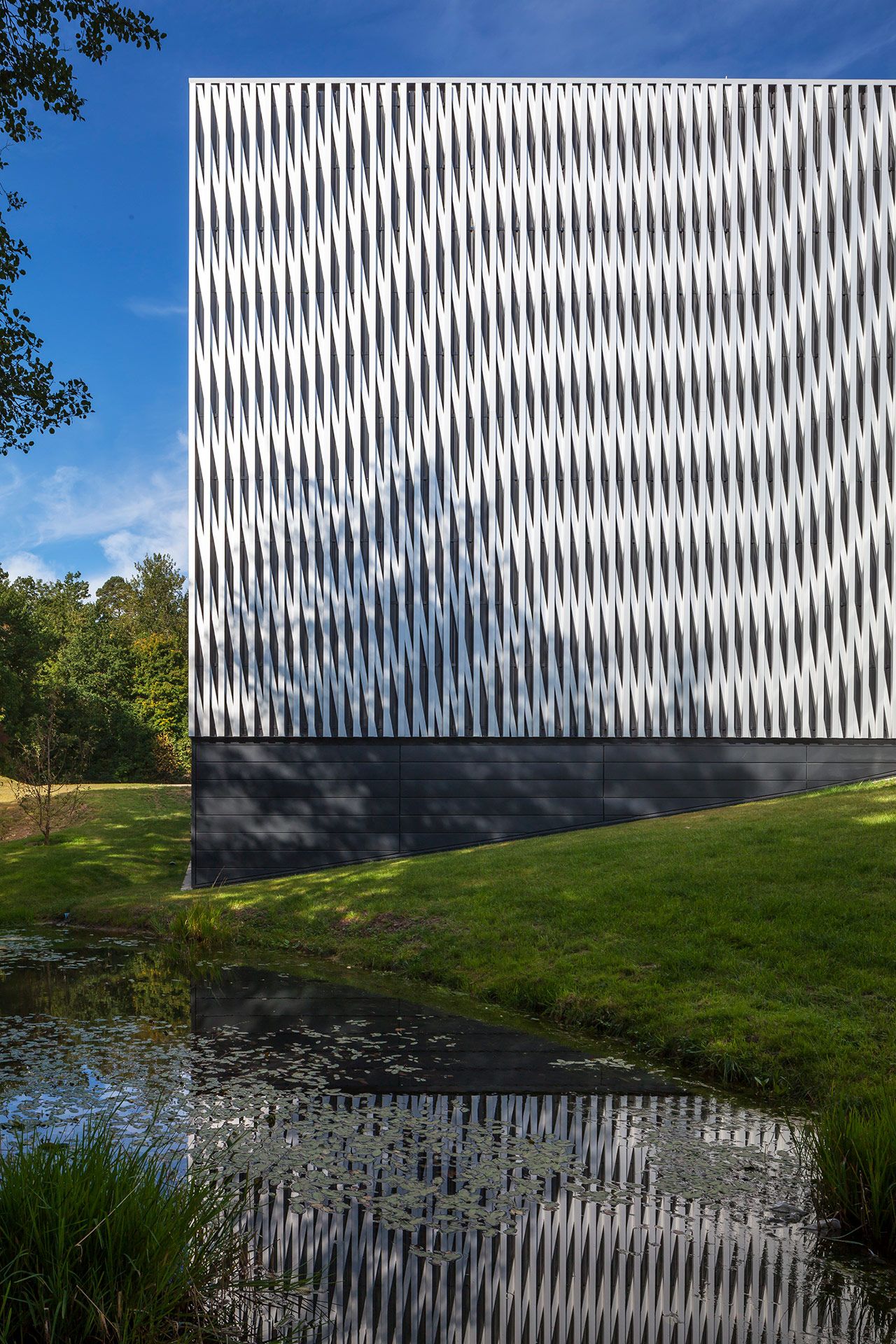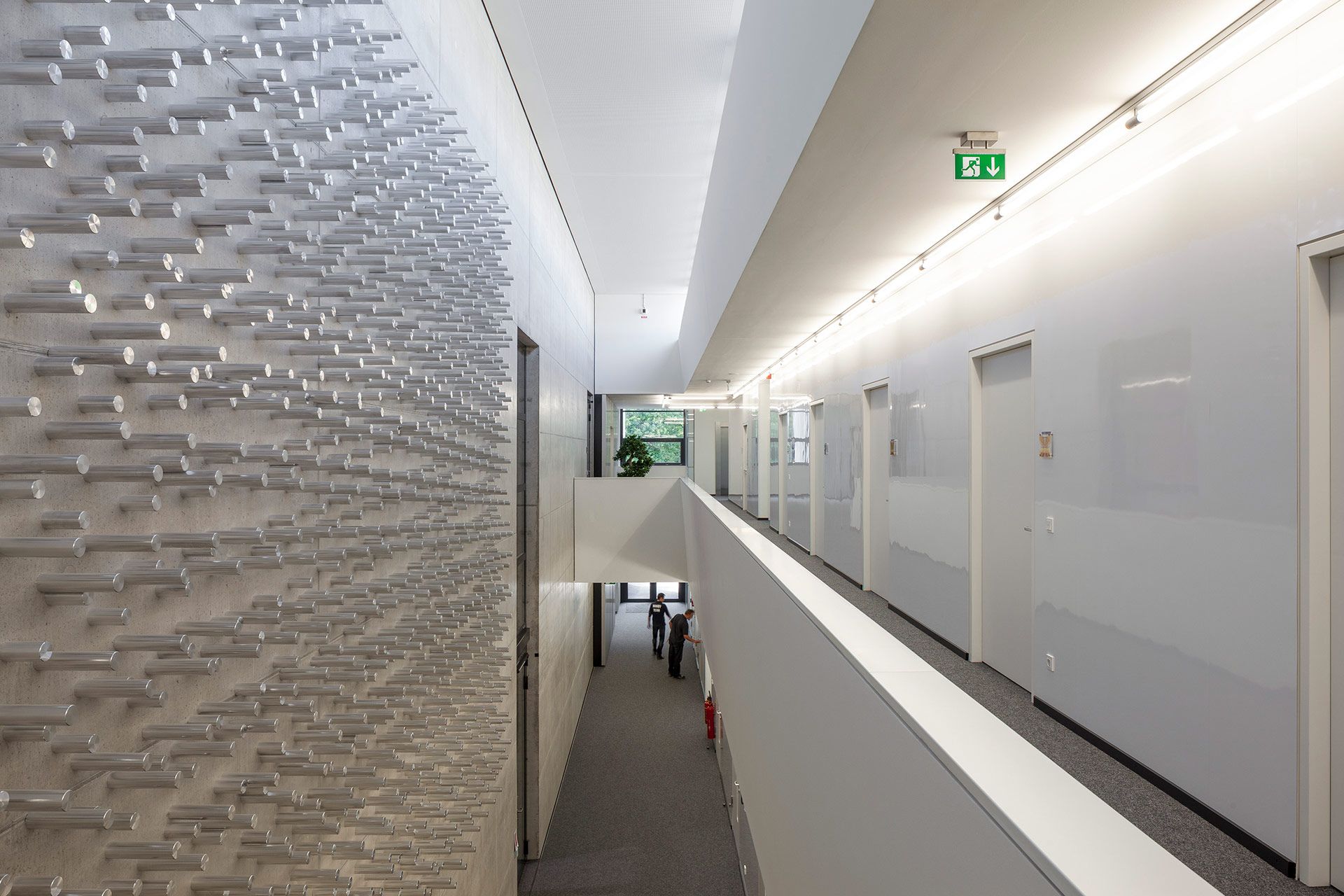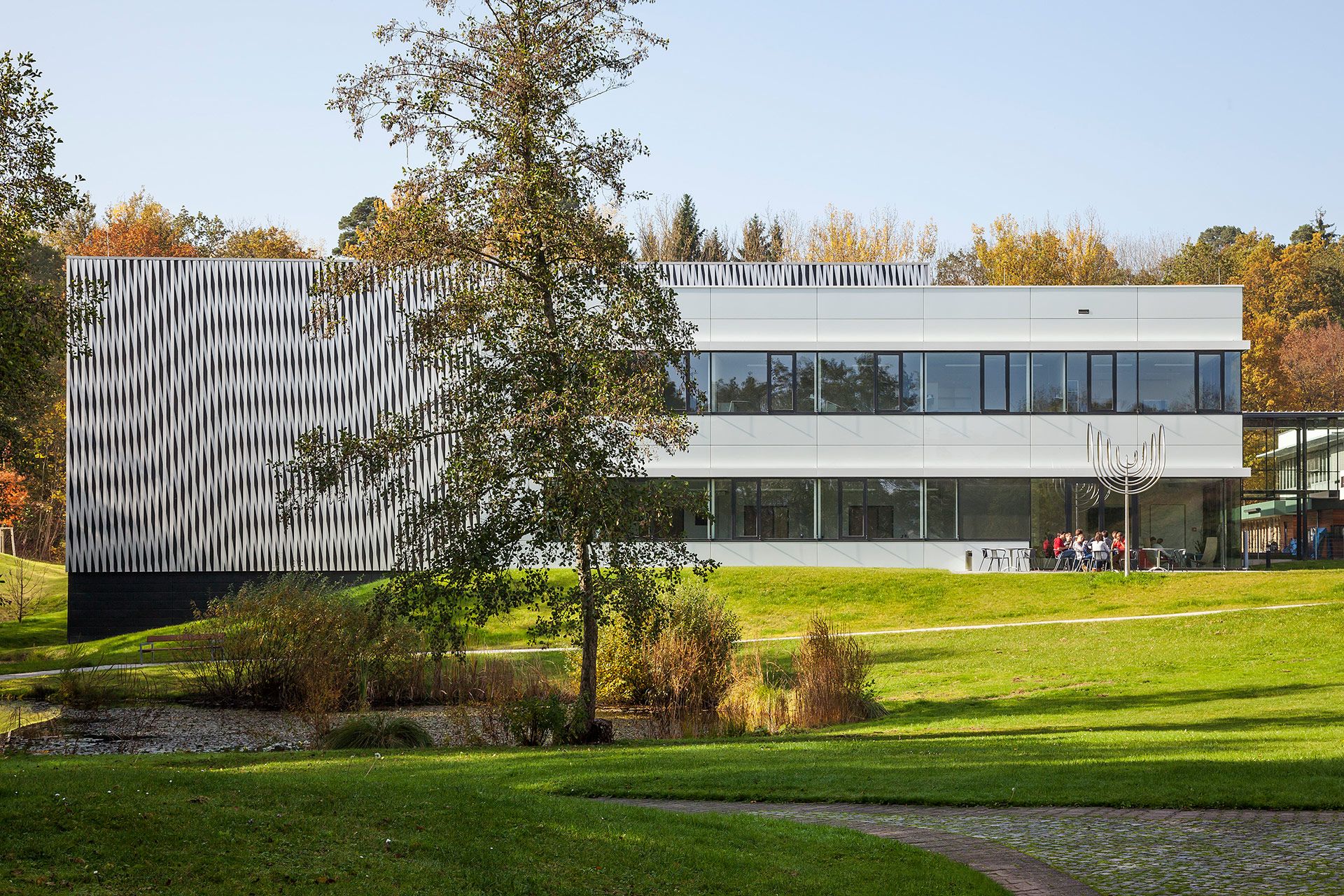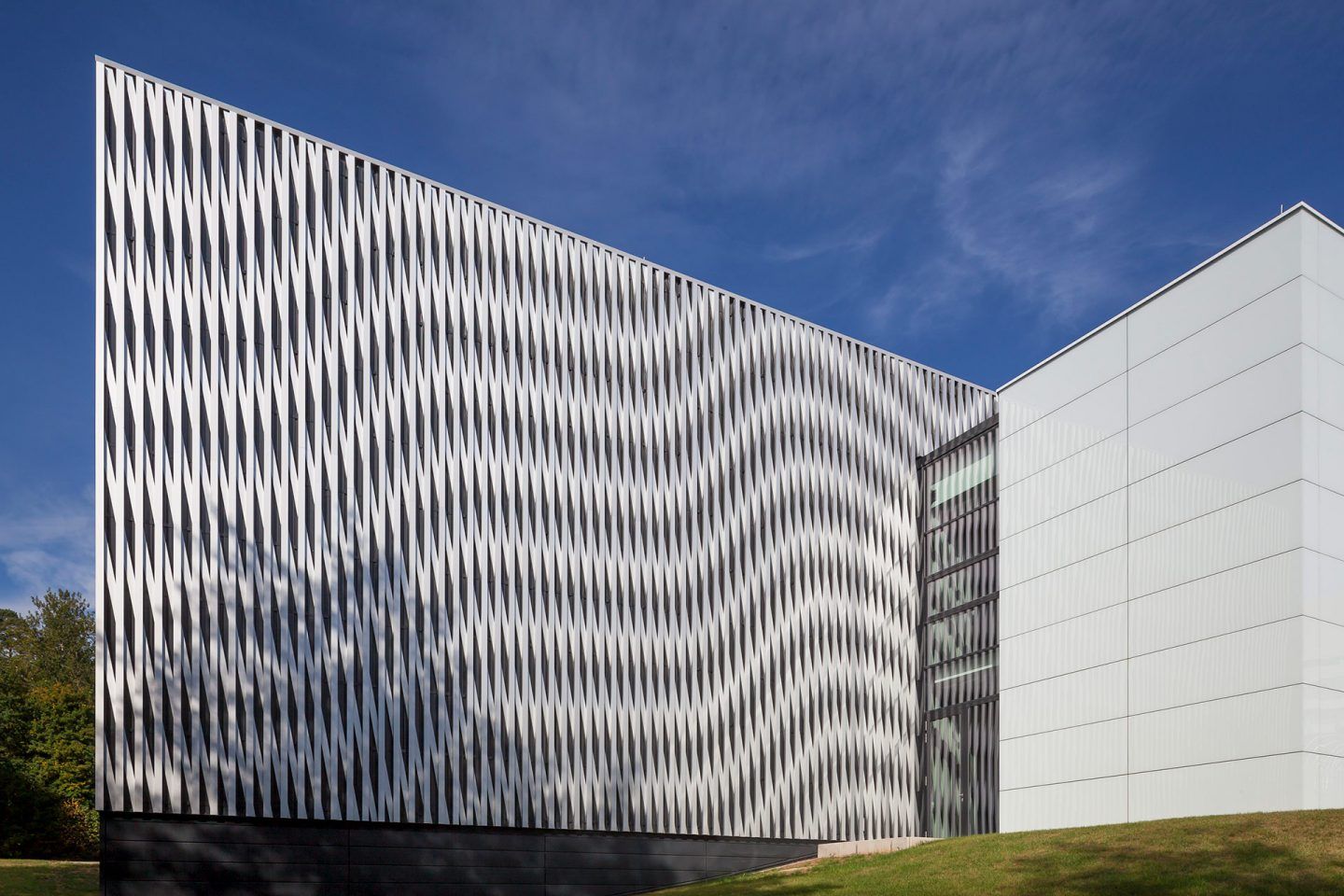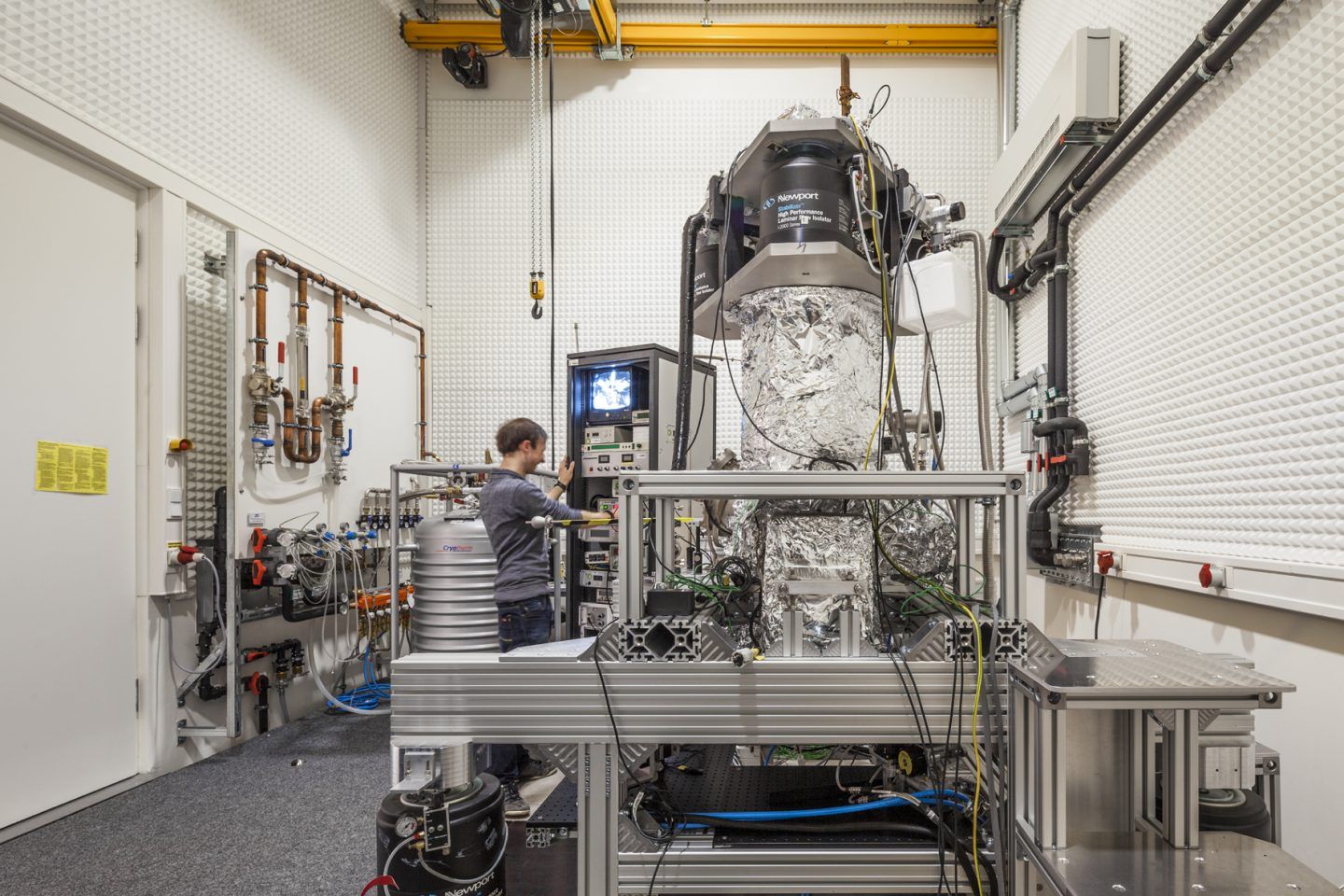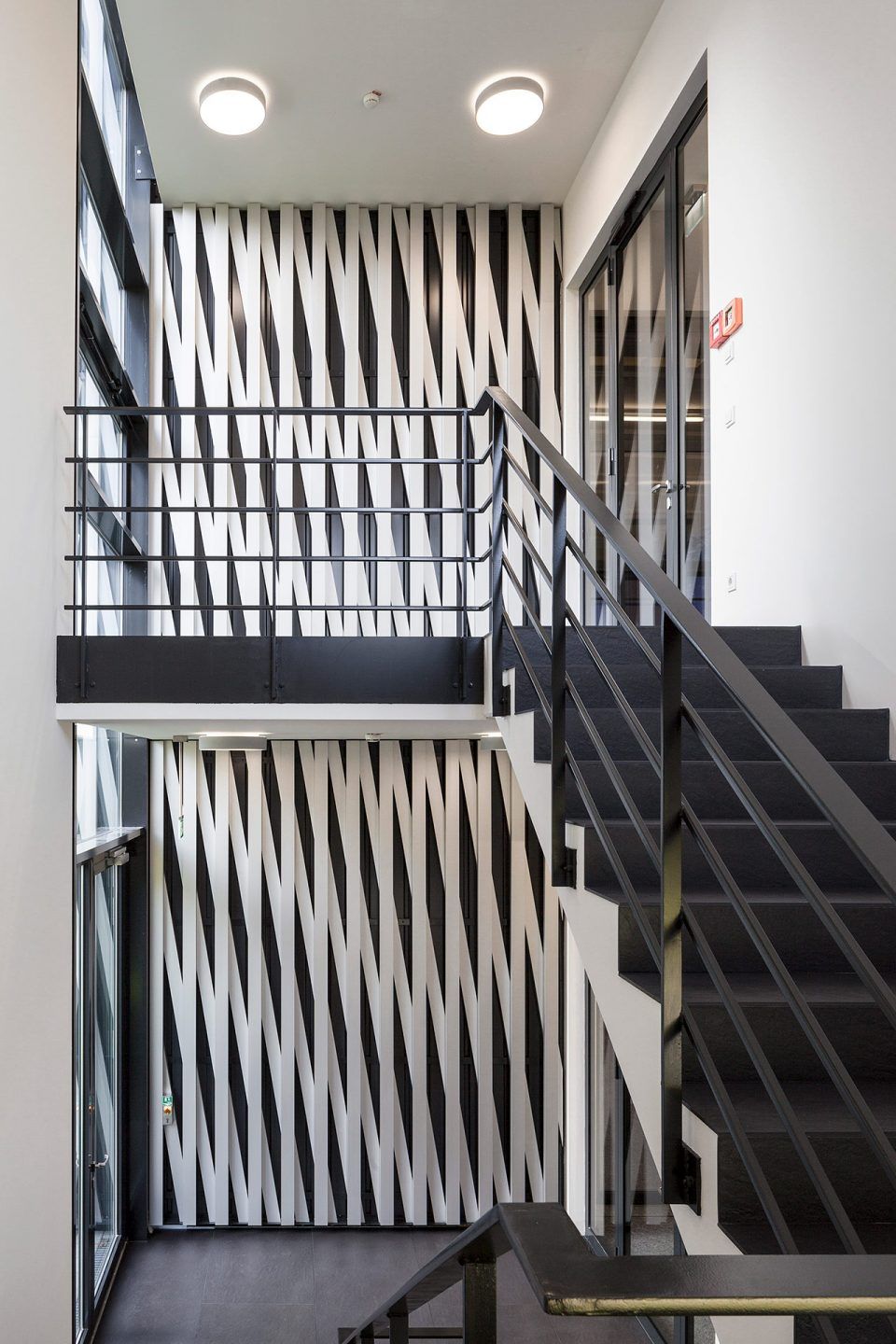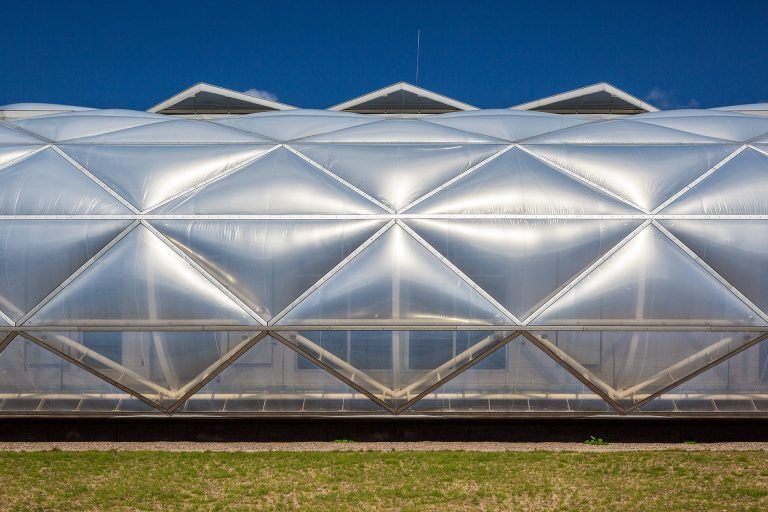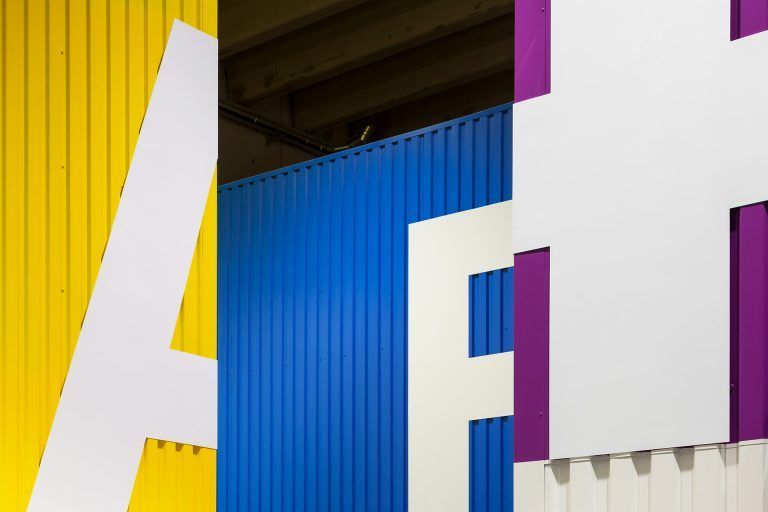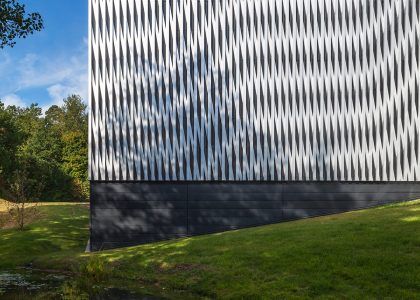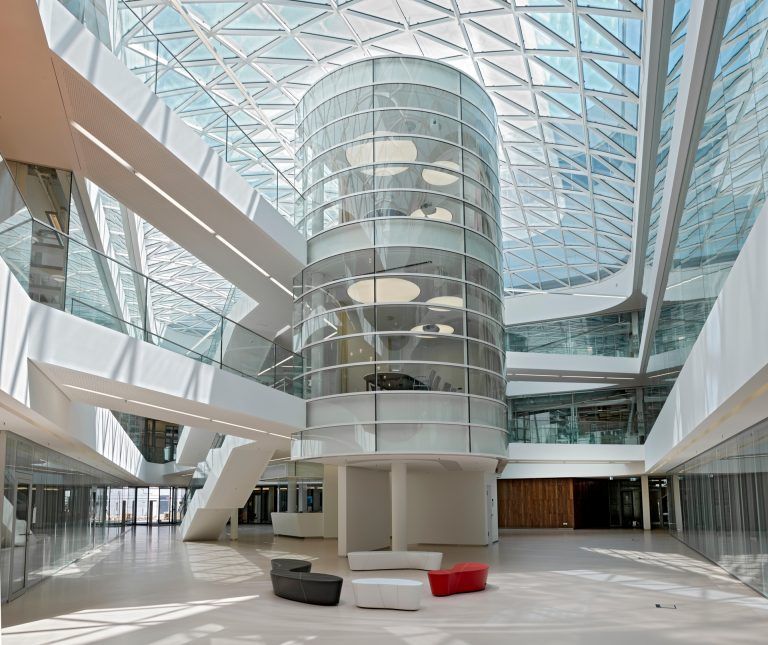If you want to observe matter at atom level, you need an entirely undisturbed environment.
Max Planck Institute Magazine: Quantum Materials – for the Technology of tomorrow
In the precision laboratory at the Max Planck Institute in Stuttgart scientists examine the surfaces of atoms, molecules and artificial quantum structures, creating the basis for future cutting-edge information technology. The most relevant precondition for this work is an environment entirely free of acoustic, electromagnetic and structural-dynamic disturbances. These complex demands required close cooperation with the scientists and engineering specialists. A lab prototype was developed, the only one of its kind, thereby setting a new standard.
